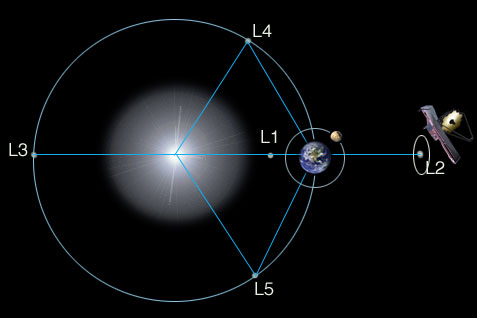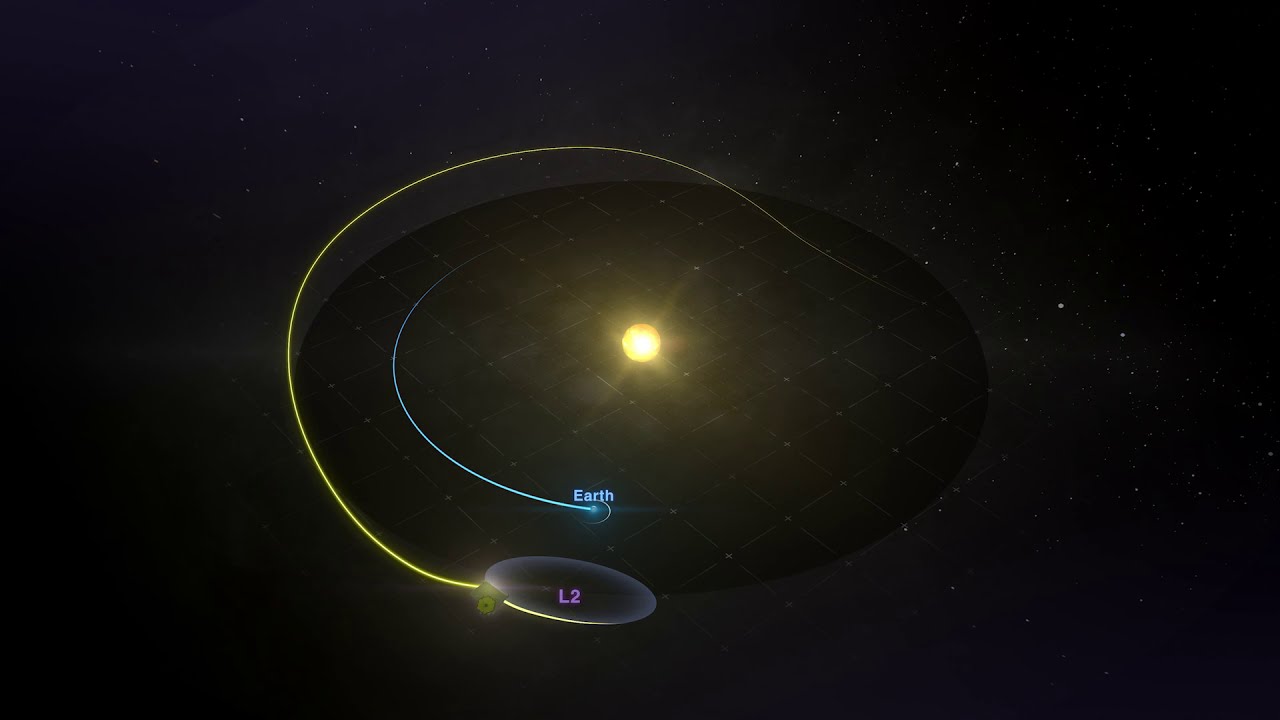
The Unique Orbit The James Webb Space Telescope Is Headed To
The James Webb Space Telescope is special in a lot of different ways. This not only includes its size, components, and purpose, but also the orbit it’s headed to. When launching practically anything into space, there are endless options for orbits and destinations. Each has its own challenges of getting there along with different benefits provided by that specific location. The JWST has an especially unique destination in mind.
The James Webb Space Telescope is set to launch and be placed in a solar orbit. This will allow the telescope to capture one-of-a-kind information and data. Specifically, the solar orbit uses a Lagrange point providing the perfect location for the telescope. This location helps the JWST keep cool, communicate with Earth, and stay at a reasonable distance. All of which will ensure Webb can look into the universe’s past and discover invaluable information.
The Hubble Telescope was able to provide countless information over time. However, this telescope is now old and outdated compared to current technology. The James Webb Space Telescope plans on revealing the past of the universe as we have never seen before. Many different factors including the orbit its headed to play a role in the future success of the telescope.
What Is A Lagrange Point?

Unlike the Hubble, the JWST will not be orbiting the Earth. Instead, this next-generation telescope will be orbiting a Lagrange point. Around 1 million miles away from Earth the JWST will orbit the sun at L2. One of the unique aspects of this orbit is that it lets the telescope stay in line with Earth as it moves around the sun. This provides multiple different benefits including temperature control and more. Taking a closer look at the specific Lagrange point the telescope will be orbiting, Joseph-Louis Lagrange was an 18th-century mathematician who found the solution to what is called the “three-body problem.” This referred to the question of whether three bodies could orbit each other, yet stay in the same position relative to each other.
It turns out there are five solutions to this problem in the form of five different Lagrange points. At Lagrange points, the gravitational pull of two large masses precisely equals the centripetal force required for a small object to move with them. These five different Lagrange points are labeled accordingly L1 through L5. The L1, L2, and L3 points are all in line with each other, and L4 and L5 are at the points of equilateral triangles. Other satellites have been sent to L2 in the past but nothing with the power or capabilities of the James Webb Space Telescope. While L2 is quite a bit more complicated to deliver and operate the JWST, it provides many different benefits crucial to the success of the telescope.
Benefits Of JWST’s Orbit

Communication – The first important feature of the JWST’s orbit is communicating with the telescope. While a lot of work has gone into ensuring the James Webb Space Telescope can complete many complex tasks by itself, communicating with the telescope is still very important. This can be a challenge when launching it around 1 million miles away. However, L2 ensures we will be capable of consistently communicating with the telescope.
Specifically, at L2, the JWST will always be at the same location relative to Earth in the midnight sky. This means we can have continuous communications with it as the Earth rotates through the Deep Space Network, or DSN, using three large antennas on the ground located in Australia, Spain, and California. This is crucial for Webb’s routine operations including the process where it will uplink command sequences and downlink data up to twice per day, through the DSN. The observatory can perform a sequence of commands such as pointing and observing autonomously. Typically, the Space Telescope Science Institute will upload a full week’s worth of commands at a time, and make updates daily as needed. Thanks to the JWST’s orbit, this is possible practically at any time of the day or year.
Temperature – The next crucial aspect of the JWST’s orbit is controlling the temperature. The James Webb Space Telescope primarily observes infrared light which can sometimes be felt as heat. The JWST is planning on looking incredibly far away trying to pick up the slightest amounts of light. For this reason, the telescope needs to be shielded from any bright or hot sources. In order to help with this problem, the JWST has a massive sunshield installed that reflects light from the necessary instruments and the main telescope on the other side. This ensures the telescope is cool at around 225 degrees below Celsius.
In order for this sunshield to be effective, it needs to always be blocking large heat and light sources such as the sun, Earth, and Moon. Thanks to the unique L2 orbit, the JWST can position itself in a way to always block light and heat from the three sources I mentioned. This means the telescope will stay cold and always be positioned in a way where it can look out into the universe. This orbit, which takes Webb about 6 months to complete once, keeps the telescope out of the shadows of both the Earth and Moon. Unlike Hubble, which goes in and out of Earth’s shadow every 90 minutes, Webb will have an unimpeded view that will allow science operations 24/7.
Distance – Final important feature of the James Webb Space Telescope’s orbit that I want to mention has to do with this distance. The L2 destination is quite far away when compared to Earth’s orbit but still very manageable. While we can’t simply launch a rocket and make repairs, there are other benefits it provides. It will take around 30 days for Webb to reach the start of its orbit at L2, however, it will only take 3 days to get as far as the Moon’s orbit which is about one-fourth of the way to L2.
NASA describes getting to the L2 orbit as “reaching the top of a hill by pedaling a bicycle vigorously only at the very beginning of the climb, generating enough energy and speed to spend most of the way coasting up the hill so as to slow to a stop and barely arrive at the top.” The process of launching and delivering the JWST to the perfect orbit is very important. Additionally, people wonder why this orbit doesn’t take longer than a year considering the telescope will orbit the sun farther out than Earth. In reality, the balance of the combined gravitational pull of the Sun and the Earth at the L2 point means that the JWST will keep up with the Earth as it goes around the Sun. Specifically, the gravitational forces of the Sun and the Earth can nearly hold a spacecraft at this point. This means it takes relatively little rocket thrust to keep the spacecraft in orbit around L2.
Conclusion
We have launched large and powerful telescopes into space plenty of times, however, none have been quite like the James Webb Space Telescope. One of the most unique aspects of the next-generation technology is the orbit it’s headed to. The JWST will launch and spend 30 days in space before reaching a Lagrange point. This orbit will provide good communication, temperature control, and a realistic distance. All of these benefits will help Webb look into the universe’s past and discover new and invaluable information. With the launch just around the corner, we will have to hope for the JWST’s success and see the impact and information it provides.
